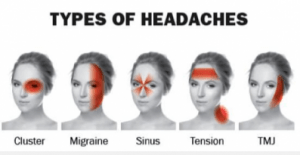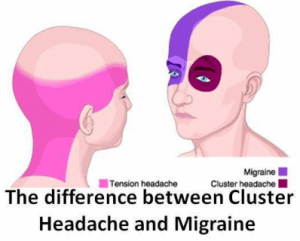When classifying headache are variety of factors are considered, firstly the location of the headache pain, the specific description of the type of pain felt, the consideration of possible triggers, and any associated symptoms ie. nausea. Gathering information about headache history and the success of potential relieving strategies are vital in the determination of headache type.
Knowing the type of Headache helps assist either employing strategies to avoid the Headache, and utilize treatment options with proven effectiveness.

The potential cause of the Headache also helps to define the type of head ache.
The location of pain, ie. whether the Headache is bilateral (on both sides of the head) or unilateral (one sided), located at the front of the head around the forehead, posteriorly at the base of the head or particularly around the eyes, assists build a diagnostic profile of each headache type. The pain location is one of a variety of factors combined with other headache attributes to make a final headache diagnosis.

Tension Headache suffers more frequently report feelings of tightness "like my head is caught in a vice"sensation, Cervicogenic Headaches are mostly strong and dull in nature, and Migraines are considered the most severe and often requiring the suffer to take complete bed rest until the symptoms pass.
Nausea and vomiting are the hallmark of Migraine behaviour along with photo-sensitivity (sensitivity to light), phonophobia (sensitivity to light). Thus the sufferer often retreats to dark, quiet rooms and bed rest.
Cervicogenic Headache because of its musculoskeletal origin, often is combined with restricted head movements, particularly extension (looking up) and rotation.
Other symptoms may also be associated with the Headache and of worth taking note.
Previously successful treatment techniques provide the final clues in diagnosing the headache type. Many individuals will experience recurrent headaches and may have developed effective strategies.
At Function and Form we have had great success working with relieving acute and chronic headaches and the ongoing management of migraine sufferers.